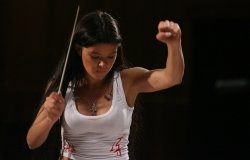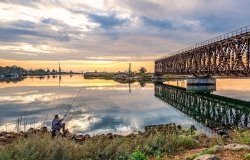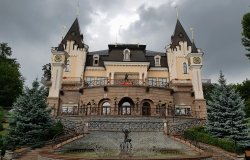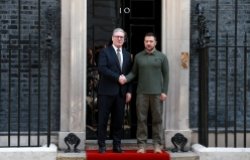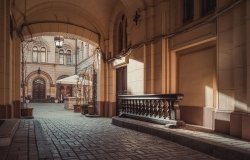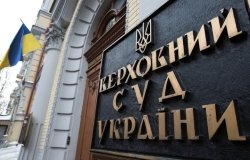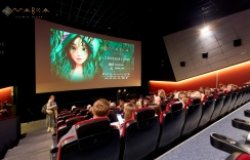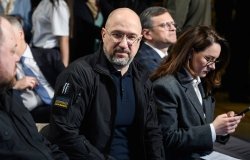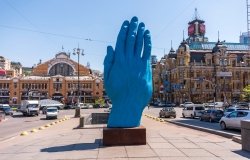
A blog of the Kennan Institute
Extending the Ukrainian New Wave into a New Era
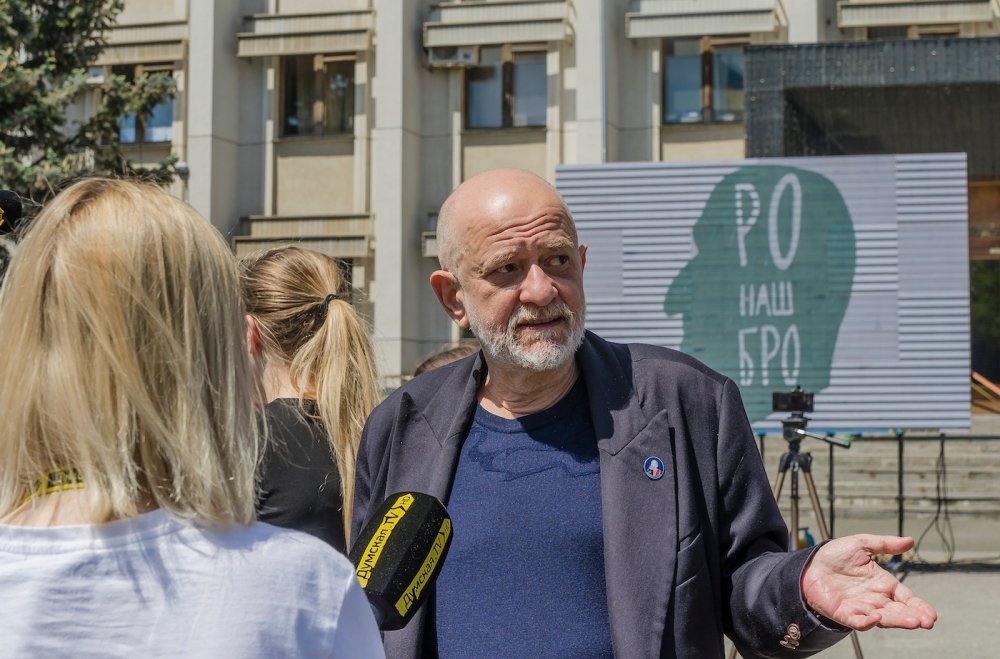
Alexander Roitburd changed the course of Ukrainian contemporary art as a painter, installation artist, videographer, photographer, and organizer. A founder of the Ukrainian New Wave of the 1990s and a theorist within the Ukrainian Transavantgard, his influence continues to shape the art world, even after his 2021 death. A continuing exhibit at the Odesa Museum of Fine Art tells the story of Roitburd’s artistry and influence, even as the institution struggles with the exigencies of war.
Roitburd graduated from the Odesa Pedagogical Institute in 1983 and seized the opportunities emerging during the Gorbachev years to experiment with art forms that moved beyond the staid markers of the Soviet period. Ukrainian independence accelerated his embrace of post-Soviet postmodernism. In 1993, he co-founded the New Art Association in Odesa, and remained in its leadership until the early 2000s. His provocative works won spots at major galleries and museums in Ukraine, Russia, Europe, and North America.
His distinctive, highly stylized art works merged elements of the surreal with more organic forms, often with a flavor of irony. Images emerge from the canvas as hints of more representational images. Kyryll Lipatov, the curator of the exhibit, writes on the museum’s website, “Lines multiply and become confused. Lines weaken and sag. Lines stretch and tremble. The lines are sprinkled with dots. Lines disappear into the horizon. Lines line up in azimuths. Overripe friendships are divided by borders. Lines are tightened with a loop. They rub against each other, sprinkling rosin; the lines sing. Holes in the canvas are filled with allusions.”
Roitburd’s role as a leader of what has become known as the “Ukrainian New Wave” helped set Ukrainian contemporary art off in new directions following independence. The movement emerged during perestroika, as young artists of his generation (those born in the 1960s) broke away from the suffocating embrace of Soviet officialdom. They sought to make personal statements with their art, drawing on what they were seeing in the avant-garde and postmodernist movements of the West that had been closed to them by Soviet censorship.
The artists of this generation never embraced a single vision, but they shared common interests in the promotion of creative freedom, individual independence, and experimentation. These are characteristics marking Roitburd’s work and are features of the art he promoted in his various organizational roles.
His own artistic sensibility reflected the city of his birth. Odesa long has been a place where the supernatural and the absurd can seem normal, where a sly humor always lurks just beneath life’s surface. [See, for example, articles in this series posted on March 2, 2022, June 24, 2022, June 16, 2023, and October 20, 2023]. It is a sensibility which won him fans well beyond Odesa, and yet it is in his hometown where he remains most appreciated. Just two months before he died of cancer at age 59, he established a program supporting new art chronicling contemporary artistic development in the city and throughout Ukraine. At last count, these funds have enabled his hometown’s museum to add 670 new works to its collection.
The museum’s continuing display of Roitburd’s work is a reminder of the autonomous development of Ukrainian cultural life cut short by the 2022 Russian full-scale invasion. Its continuation reflects a determination to draw fresh sustenance from his oeuvre, even as Russian weapons inflict harm on all Ukrainian cultural institutions. Once the last bomb has fallen, Ukrainians will resume their own artistic trajectories. Thanks to the work of institutions such as the Odesa Museum of Fine Arts—with its exhibitions of Roitburd’s work and the hundreds of new works his funding has made possible—much will be available to inspire new directions in Ukrainian art.
The opinions expressed in this article are those solely of the author and do not reflect the views of the Kennan Institute
See our newest content first.
Subscribe to receive the latest analysis from Focus Ukraine
About the Author

Blair A. Ruble
Former Wilson Center Vice President for Programs (2014-2017); Director of the Comparative Urban Studies Program/Urban Sustainability Laboratory (1992-2017); Director of the Kennan Institute for Advanced Russian Studies (1989-2012) and Director of the Program on Global Sustainability and Resilience (2012-2014)

Kennan Institute
The Kennan Institute is the premier US center for advanced research on Eurasia and the oldest and largest regional program at the Woodrow Wilson International Center for Scholars. The Kennan Institute is committed to improving American understanding of Russia, Ukraine, Central Asia, the South Caucasus, and the surrounding region though research and exchange. Read more


